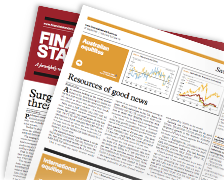Top 10% of households home to 15 times more wealthBY JAMIE WILLIAMSON | FRIDAY, 19 APR 2024 12:30PMThe average household wealth of Australia's richest 10% increased by 84% in the past 20 years, while that of the lowest 60% increased significantly less. A new report from ACOSS and UNSW Sydney's Poverty and Inequality Partnership - titled Inequality in Australia 2024: Who is affected and how? - shows the average household wealth of Australia's highest 10% went from $2.8 million in 2003 to $5.2 million today. Over the same period, the average household wealth of the lowest 60% increased just 55%, growing from $222,000 to $343,000. Of the overall growth in household wealth since 2003, some 45% of it went to the highest 10%, being those with more than $2.6 million, and half of that went to people aged 64 and older. The wealth inequality in households aged under 35 is also stark. The average wealth of the top 10% grew from $928,000 in 2003 to $2 million today - up 126%. Meanwhile, the average wealth of the lowest 60% rose just 39%, increasing from $68,000 to $80,000. The average household has $1.2 million in total wealth, 41% of which is in owner-occupied housing. 13% is in investment properties, 20% in superannuation, and 19% in other investments. The data shows a huge contributor to wealth inequality is income inequality. The latest available data, which is from 2019, shows the highest 10% of households ranked by income earn an average of $5200 per week after tax. The middle 20% take home $2000 per week, and the lowest 20% take home $800. ACOSS chief executive Cassandra Goldie said the fastest and most efficient way to support those worst affected by income inequality is to raise the rate of JobSeeker to at least match the pension rate of $80 a day. Currently, it is $55 a day. Related News |
Editor's Choice
Mercer rolls out new corporate super plan
|Australian Retirement Trust applies new investment exclusion
|Insignia FUM grows by $11bn, completes platform migration
|Former Diverger managing director joins VBP
|Products
Featured Profile

Robert De Dominicis
GBST HOLDINGS LIMITED
























